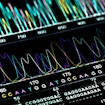Genetics

Mitra will develop a novel methodology to analyze the transcriptional networks of genes involved in ASD and assign these genes into shared molecular pathways.

Autism spectrum disorder (ASD) is a complex neurodevelopmental condition that is the result of interplay amongst hundreds of genes. Even though researchers have implicated dozens of genes in ASD to date, there is still much more to be understood. A few network-based ASD gene discovery algorithms have been developed with the following goals: (1) speeding up the gene discovery process by using the guilt-by-association principle, and (2) understanding affected functionalities by analyzing genes and links in predicted clusters. Fundamentally, these algorithms rely on the assumption that ASD risk genes are part of a functional gene network. However, the definition of a gene network in these analyses is a single, flat and static network. This approach disregards the temporal dimension in the development and differentiation of neurons and brain tissue. The assumption of ASD genes being part of a functional network is reasonable. However, the functional clustering of genes is bound to evolve over time and more than likely to have a cascading effect on future associations.

The diagnostic dyad defining autism spectrum disorder (ASD) belies a tremendous phenotypic heterogeneity that remains a key challenge to diagnosis and treatment. The strong genetic component of ASD suggests that heterogeneity in underlying genetic mutations may contribute to phenotypic heterogeneity. However, the germline genetics of ASD has thus far proven insufficient to explain the clinical heterogeneity of the disorder.

In contrast to rare copy number variants (CNVs) causing classical syndromes such as Smith-Magenis syndrome and Williams syndrome, recent studies have identified a class of rare CNVs associated with the risk of developing a wide variety of neurodevelopmental and neuropsychiatric features. Individuals affected by these variants often have carrier parents who are apparently unaffected or manifest only subclinical neuropsychiatric features. This makes genetic diagnosis, counseling and management of individuals affected by such CNVs difficult. Several identified CNVs of this category, including 16p11.2 deletion, 1q21.1 deletion, 15q13.3 deletion and 16p12.1 deletion, collectively account for about 20 percent of individuals with neurodevelopmental disorders. Although these CNVs confer higher risk for a disorder, alone they are not sufficient for the manifestation of the disorder. It is therefore essential to consider additional genetic factors that may account for the observed variability in manifestation of these disorders.
- Previous Page
- Viewing
- Next Page